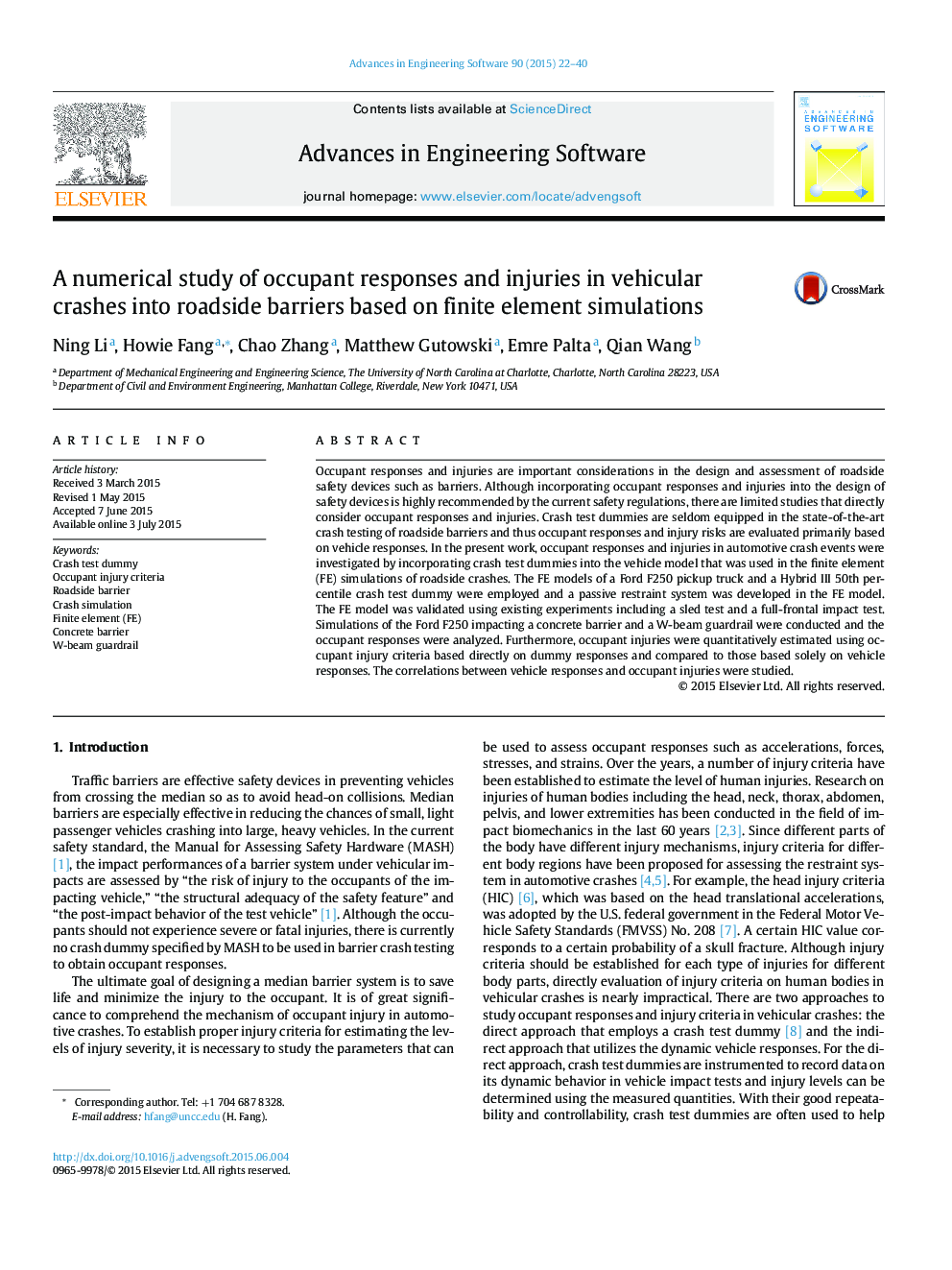| Article ID | Journal | Published Year | Pages | File Type |
|---|---|---|---|---|
| 568268 | Advances in Engineering Software | 2015 | 19 Pages |
•An FE model incorporated with a hybrid-III dummy was developed for roadside vehicular crash simulations.•Occupant injury risks were evaluated for vehicular crashes into two roadside barrier systems.•Barrier performance was assessed using occupant injury criteria based on vehicle responses and occupant responses.•Correlations between injury criteria based on vehicle and occupant responses were studied.
Occupant responses and injuries are important considerations in the design and assessment of roadside safety devices such as barriers. Although incorporating occupant responses and injuries into the design of safety devices is highly recommended by the current safety regulations, there are limited studies that directly consider occupant responses and injuries. Crash test dummies are seldom equipped in the state-of-the-art crash testing of roadside barriers and thus occupant responses and injury risks are evaluated primarily based on vehicle responses. In the present work, occupant responses and injuries in automotive crash events were investigated by incorporating crash test dummies into the vehicle model that was used in the finite element (FE) simulations of roadside crashes. The FE models of a Ford F250 pickup truck and a Hybrid III 50th percentile crash test dummy were employed and a passive restraint system was developed in the FE model. The FE model was validated using existing experiments including a sled test and a full-frontal impact test. Simulations of the Ford F250 impacting a concrete barrier and a W-beam guardrail were conducted and the occupant responses were analyzed. Furthermore, occupant injuries were quantitatively estimated using occupant injury criteria based directly on dummy responses and compared to those based solely on vehicle responses. The correlations between vehicle responses and occupant injuries were studied.
